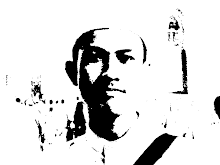First Day
12.15 am – Off to Mersa Matruh from Al-Manṣūrah.
4.30 am – Arrived at an R&R for Fajr prayer.
7.00 am – Arrived at Mersa Matruh. And we were resting for the whole morning.
2.00 pm – After Zuhr prayer, we went to Cleopatra beach and Cleopatra Bath. Beautiful. Here, we met another group of Malaysian students from Tanta.
4.30 pm – We leave Cleopatra Beach and headed to Agiba Beach to watch sunset. Agiba means ‘miracle.’
8.30 pm – We returned to Mersa Matruh and we were told that we’re gonna stop at Souq Libya. But, because the managing committee didn’t alert our bus driver because they were sleeping during the journey, we returned to our inn instead and had our dinner there. At first, our bus driver refused to take us to Souq Libya saying that he’s already exhausted. But, the managing committee tried and managed to persuade him to bring us there at eleven o’clock. At least, they compensated their mistake.
11.00 pm - Out to Souq Libya. I bought a bottle of hair tonic; the same one I got when I was in al-Madīnah al-Munawwarah. Many rare things are sold here. You can even get some fake cosmetics such as ‘Nivea for Sun’ et cetera. Usually, Malaysians love to shop for dates stuffed with chocolates or almonds. Herbs are also available. It is famous because most of the goods sold here came from Libya. We returned to our inn at 12.15 pm.
Second Day
8.00 am – Off to Sīwa.
10.30 am – Stopped at R&R in the middle of the journey.
12.00 pm – Arrived at Sīwa. We visited first Mountain of The Dead (Gebel el-Mawta). The ticket price has been raised from LE1 last year to LE15 for students. But, our managing committee managed to talk with the guards and got all 150 of us (Tanta + Al-Manṣūrah) for LE 150. However, the guards were seemed pissed off with our managing committee and they said, “I don’t wanna see you again.” Poor suckers. Nothing much to discover here except scattered skeletons and excavated chambers. On the top of the hill, I met Matthew, an English teacher from Modesto, California. We had a little chit-chat. He told me he came to Egypt to study Arabic language. He taught English in South Korea and Turkey. He seemed to be annoyed with Cairenes because they tried to suck the hell amount of money outta him every time. And he asked whether I feel the same. Well, who doesn’t? That’s why he tried to find a quiet place like Sīwa to relieve his tension.
1.00 pm – We stopped for afternoon prayer at Sīwa Grand Mosque. After prayer, we met Sheikh Idris as-Suyuti; a local Sīwan. He received his education in al-Azhar University and acquainted with Malay students. He briefed us a little about Sīwa in simple, standard Arabic and later act as our tourist guide.
1.30 pm – I’m the only participants from Al-Manṣūrah visited the Shali. Others shopped dates at nearby shops.
3.00 pm – Moved to visit the Temple of the Oracle.
4.00 pm – Leave the Temple of the Oracle and went to Cleopatra Spring. On the way to the spring, we can see the ruins of Temple of Amun (Temple of Umm Ubaydah) but we did not stop. We had our meals there. Some of us bathed and swam at the Cleopatra Bath.
5.45 pm – We leave Cleopatra Spring and stopped again at Sīwa town for second round of dates shopping.
6.15 pm – We leave Sīwa and returned to Mersa Matruh. However, we didn’t go to Salt Lake because of timing problem. Plus, the place is already closed.
10.00 pm – Arrived at Mersa Matruh.
Third Day
8.00 am – All of us went to White Beaches. It was named as such because of their white sand. Really. You can see it by using Google Earth. There are many beaches here. We just went to White Beach (شاطئ ٱلأبيض). Doing what people usually do at beaches.
1.00 pm - Then, we leave Mersa Matruh and headed home. Did not manage to visit Rommel Museum because we arrived too late and the museum was closed at our arrival. Lousy management.
9.30 pm – Arrived at Al-Manṣūrah. End of trip.




























































